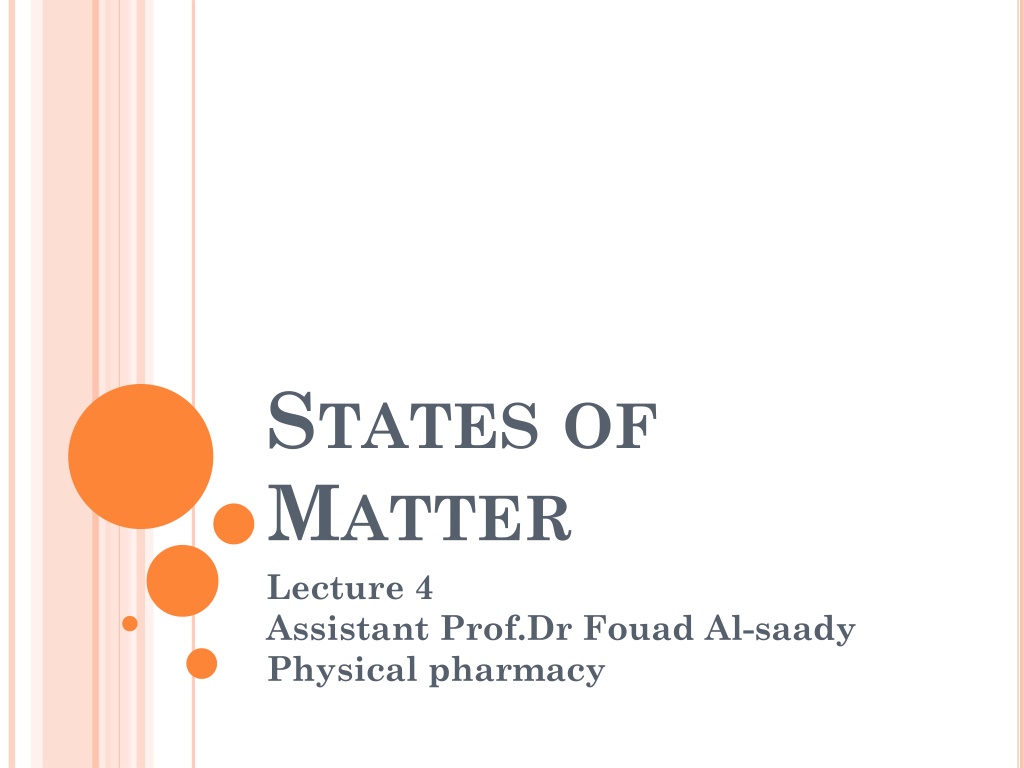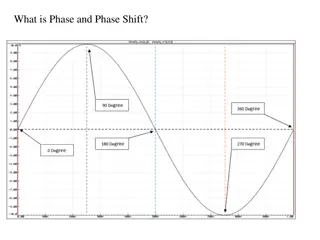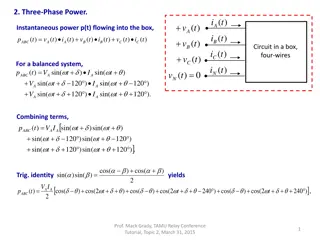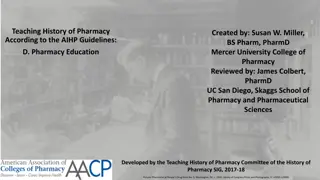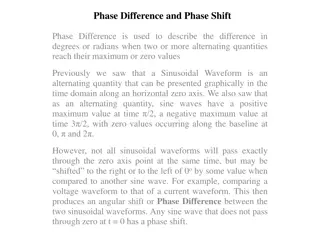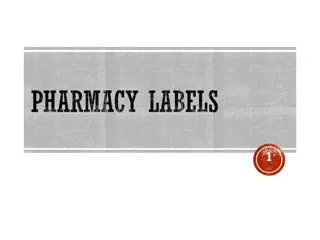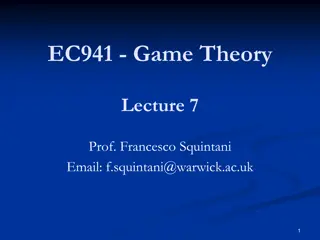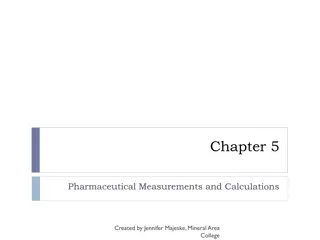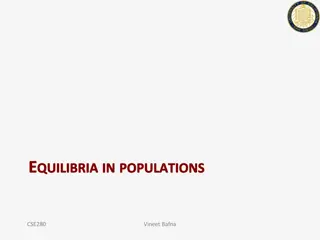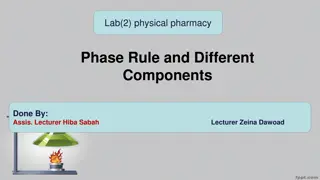Understanding Phase Equilibria in Physical Pharmacy
Delve into the complexities of states of matter, phase equilibria, and the phase rule as explained by Assistant Prof. Dr. Fouad Al-saady in the context of physical pharmacy. Learn about phase definitions, phases in different systems, and examples illustrating phase differentiation in various substances.
Download Presentation

Please find below an Image/Link to download the presentation.
The content on the website is provided AS IS for your information and personal use only. It may not be sold, licensed, or shared on other websites without obtaining consent from the author. Download presentation by click this link. If you encounter any issues during the download, it is possible that the publisher has removed the file from their server.
E N D
Presentation Transcript
STATES OF MATTER Lecture 4 Assistant Prof.Dr Fouad Al-saady Physical pharmacy
PHASE EQUILIBRIA & THE PHASE RULE: DEFINITIONS Phase Equilibrium: A stable phase structure with lowest free-energy (internal energy) of a system, and also randomness or disorder of the atoms or molecules (entropy). Any change in Temperature, Composition, and Pressure causes an increase in free energy and away from Equilibrium thus forcing a move to another state
PHASE DEFINITION A phase is defined as any homogeneous and physically distinct part of a system which is separated from other parts of the system by interfaces. A phase may be gas, liquid or solid. A gas or a gaseous mixture is a single phase. Totally miscible liquids constitute a single phase.
In an immiscible liquid system, each layer is counted as a separate phase. Every solid constitutes a single phase except when a solid solution is formed. A solid solution is considered as a single phase. Each polymorphic form constitutes a separate phase.
Liquid water, pieces of ice and water vapour are present together. The number of phases is 3 as each form is a separate phase. Ice in the system is a single phase even if it is present as a number of pieces. 1. Calcium carbonate undergoes thermal decomposition. 2. The chemical reaction is: CaCO3(s) CaO(s) + CO2(g) Number of phases = 3 : This system consists of 2 solid phases, CaCO3 and CaO and one gaseous phase, that of CO2. 3. A solution of NaCl in water Number of phases = 1
COMPONENTS The number of components of a system at equilibrium is the independently varying chemical constituents using which the composition of each and every phase in the system can be expressed. smallest number of
EXAMPLES Counting the number of components The sulphur system is a one component system. All the phases, monoclinic, rhombic, liquid and vapour can be expressed in terms of the single constituent sulphur. 1. A mixture of ethanol and water is an example of a two component system. We need both ethanol and water to express its composition. 2.
DEGREES OF FREEDOM (OR VARIANCE) The degrees of freedom or variance of a system is defined as the minimum number of variables such as: temperature pressure concentration which must be fixed in order to define the system completely. F = C P + 2
ONE-COMPONENTSYSTEMS Phase diagram of water Curve O-A Vaporization Condensation Critical point 218 Curve O -B Melting P (atm) 1 Freezing Curve O -C Sublimation 0.006 Deposition =100 =0 O--Triple point 374 F = C P + 2
Condensed system: System in which the vapor phase is ignored and only the solid and/or liquid phases are considered. Two component system For two component system F can be 3, (3D model is needed), e.g. T, p and concentration , usually we fix p = 1atm , the vapor phase is neglected, and F is reduced to 2 For three component system the pressure and temperature are fixed
THE CRITICAL SOLUTION TEMPERATURE: CST Is the maximum temperature at which the 2-phase region exists (or upper consolute temperature). In the case of the phenol-water system, this is 66.8oC (point h) All combinations of phenol and water > CST are completely miscible and yield 1-phase liquid systems.
SYSTEMS SHOWINGA DECREASEIN MISCIBILITYWITH RISEIN TEMPERATURE A few mixtures, exhibit a lower critical solution temperature (low CST), e.g. triethylamine water. The increased miscibility with reduced in temperature. plus
SYSTEMS SHOWING UPPERAND LOWER CSTS nicotine-water has both lower and upper temperature system consolute
